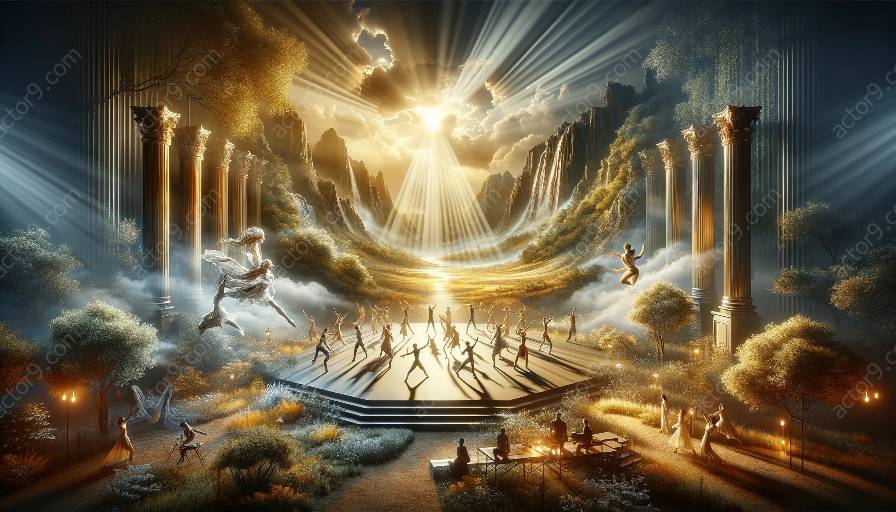Physical theatre is a highly visual and dynamic art form that combines movement, storytelling, and visual elements to create a unique theatrical experience. The use of lighting in physical theatre plays a crucial role in enhancing the portrayal of movement and choreography, as it interacts with the performers and the performance space to effectively convey the emotions and narrative of the production.
The Role of Lighting in Physical Theatre
Lighting is an essential component of physical theatre, as it has the power to transform the stage, manipulate the mood, and highlight the performers' movements and actions. In physical theatre, lighting design is carefully orchestrated to complement the choreography and amplify the expressive qualities of movement. By creating an immersive visual environment, lighting enhances the audience's engagement and understanding of the narrative unfolding through physical expression.
Interplay of Lighting and Movement
The interplay between lighting and movement in physical theatre is a complex and multi-faceted relationship. Lighting has the ability to sculpt and define the space around the performers, accentuate their movements, and guide the audience's focus. Strategic lighting design can accentuate the dynamics of physical performances, emphasizing the shape, rhythm, and intensity of movements while also creating visual compositions that evoke emotional responses.
Enhancing Choreography through Lighting
Choreography in physical theatre relies heavily on the visual impact of movement. Lighting serves as an invisible partner to choreography, illuminating the performers in a way that underscores the storytelling and emotional content of their movements. By using contrasts, colors, and textures, lighting designers can create visual landscapes that complement and reinforce the choreographic elements, allowing the audience to connect with the performance on a deeper, more visceral level.
Dynamic Nature of Lighting Design
The dynamic nature of physical theatre demands lighting that can adapt and respond to the ever-changing movements and interactions of the performers. Lighting designers in physical theatre must possess a deep understanding of the choreography and the emotional nuances of the performance in order to craft lighting that seamlessly integrates with the movements, enriching the overall artistic expression.
Integration of Technology and Artistry
Advancements in lighting technology have expanded the creative possibilities for lighting design in physical theatre. LED lights, moving fixtures, and intelligent lighting systems allow for intricate and dynamic lighting effects that can synchronize with the movements of the performers, blurring the lines between technology and artistry. This integration of technology and artistry opens up new avenues for enhancing the immersive experience of physical theatre productions.
The Emotional Impact of Lighting
Beyond its technical functions, lighting in physical theatre has a profound emotional impact on the audience. By manipulating brightness, color, and shadow, lighting can evoke a range of emotions, intensifying the dramatic tension or conveying subtleties of mood. The interplay of lighting and movement serves as a visual language that communicates the underlying themes and emotions of the performance, creating a deeply resonant and captivating experience for the audience.




































